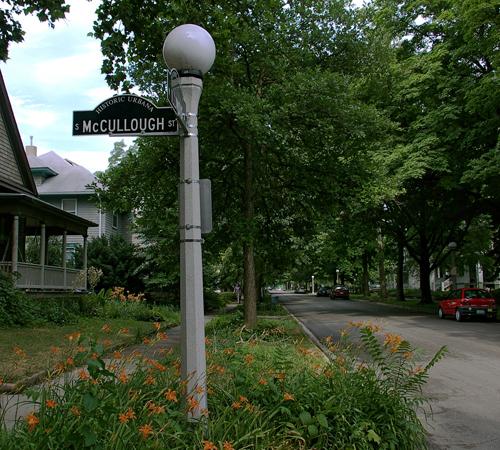Community works toward eco-friendliness

Steve Contorno
June 19, 2007
In the Champaign-Urbana area steps have been taken to promote an environmentally-conscious way of life.
This was recently recognized by Country Living Magazine, which named Champaign-Urbana one of the top 10 greenest communities in the nation. Although there were myriad factors involved in the selection process, new buildings standards, access to organic food and bikeability were at the forefront.
Developing green building
In the area of new construction, there has been a push for advanced building techniques.
The University now has standards to make the buildings environmentally friendly for all projects costing more than $5 million. Nationally these standards have been set by the Leadership in Energy and Environmental Design rating system. Commonly known as LEED, this rating system was developed by the U.S. Green Building Council to provide standards for environmentally sustainable construction.
Get The Daily Illini in your inbox!
The Business Instructional Facility, located at the intersection of Gregory Drive and Sixth Street, is one of the first on campus to be designed with LEED in mind. It will run more efficiently, requiring less energy than is normally needed for venues of its size. Many materials will be sourced locally and the indoor air quality will also be of a higher standard.
“The LEED certification has been most predominant in industry and new institutional buildings,” said Dr. Rumi Shammin of the Environmental Council. “The University has become more interested in their energy and the rating system, in general, both for the costs and the (environmental) impact. “
Similarly, both the cities of Champaign and Urbana have promoted this type of construction.
On Kerr Avenue in Urbana, there are plans to develop low-cost housing under newly developed LEED standards for communities. Although the final report is still due back to the city, the hope is to create a model community for other cities to follow.
The city of Champaign has spent considerable money to redevelop the downtown.
“Green” construction is generally broken into two areas, Shammin said. One deals with building practices like LEED certification and the other deals with community planning.
“Champaign has been good about redeveloping and making … downtown compact and high density,” he said. “Take the One Main development for example. On the bottom is retail, above that is office space, and above that is housing.”
Eating green
However, for those who are trying to live a green life, food is just as important.
“Everyone wants local food because it’s seen as a healthier alternative to what is found in supermarkets,” said Jacqueline Hannah, the general manager of Common Grounds Food Coop.
And while the Market at the Square, also known as the farmers’ market, in Urbana is only held from May until November, yearlong demand for local and organic produce still persists.
“We have been continually growing. Our membership is up 80 percent, and our sales are up 17 percent every year,” she said.
The idea of eating organic food is no longer considered out of the ordinary. In addition to the expansion in sales, Hannah commented that the demographics of her customers have been widening, to include not just students but also families and retirees.
“Organic food has become a lot less political,” she said. “It’s no longer something just for people in the Green Party.”
With an eye on healthy lifestyles and the E.coli outbreak still fresh in many people’s minds, the future looks optimistic.
“I think it’s going to be more mainstream. In the next 10 years, I don’t see an end,” she said.
Because there is a growing demand, she expects much of this growth will be reflected by local stores expanding their operation.
Green involvement
In addition to eating healthy, many people in each of the communities are opting to ride bikes. From the most recent census data, almost 25 percent of commuters in Urbana and around 20 percent of commuters in Champaign either walk or bike to work. Still, the vast majority of commuters drive to work each day.
The Urbana City Council has latched on to this idea and is currently developing a master bike plan for the city.
“I am really excited about the master bike plan,” said Councilmember Danielle Chynoweth in a recent Urbana City Council meeting. “You would not have seen this a couple years ago.”
Similarly, the campus is looking to enact its own version of a comprehensive bike plan.
“You are starting to see concrete changes,” said Barry Isralewitz, a graduate student in Theoretical Biophysics and creator of the Bike Project. “The bike paths we have now are very much from the ’70s. But they are starting to speak our language.”
The Bike Project, commonly called the Bike Coop, was started by Isralewitz and some of his friends in order to serve the area’s need for bikes and bike repair.
“There is too much demand and not enough supply,” said Mac Singer, a senior in FAA and one of the founding members.
Ultimately, Isralewitz hopes that the project will be able initiate change within the community.
“One of the major obstacles to living a bike lifestyle is now gone,” he said. “The interest in the coop has been amazing, and we hope to show that it’s not that hard to live a life that’s car-free.”






